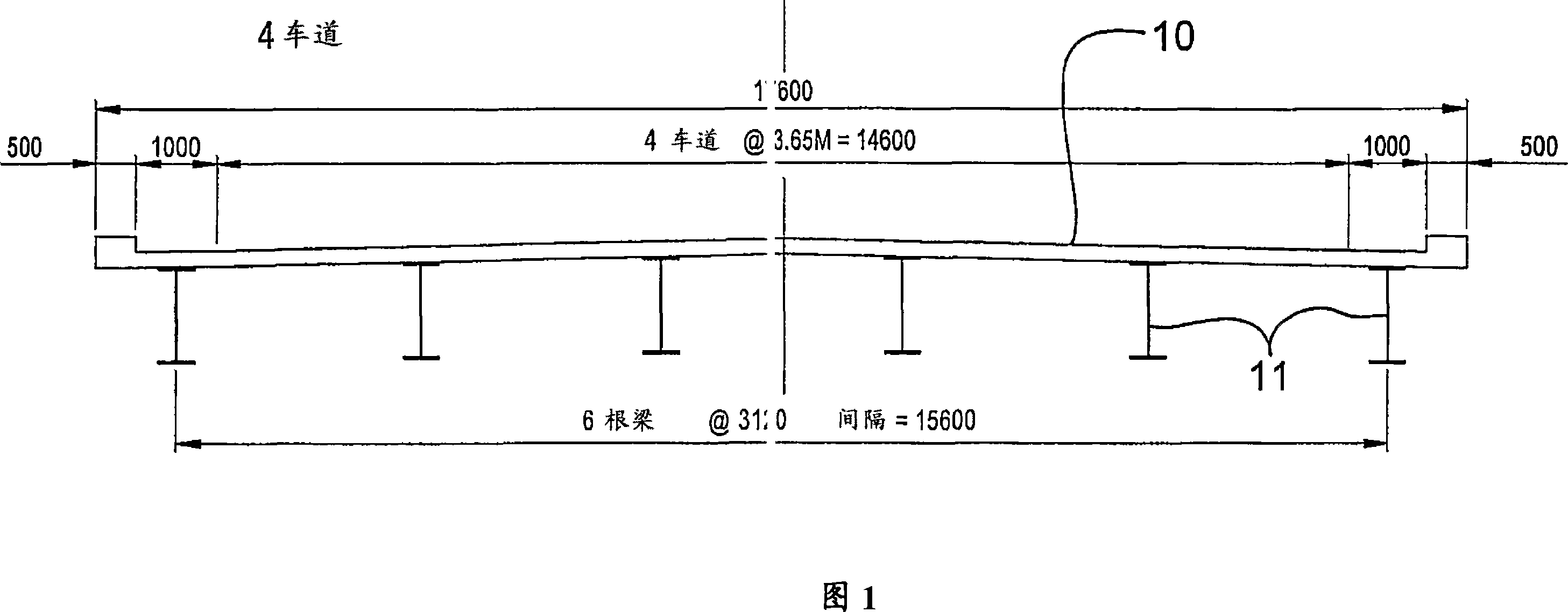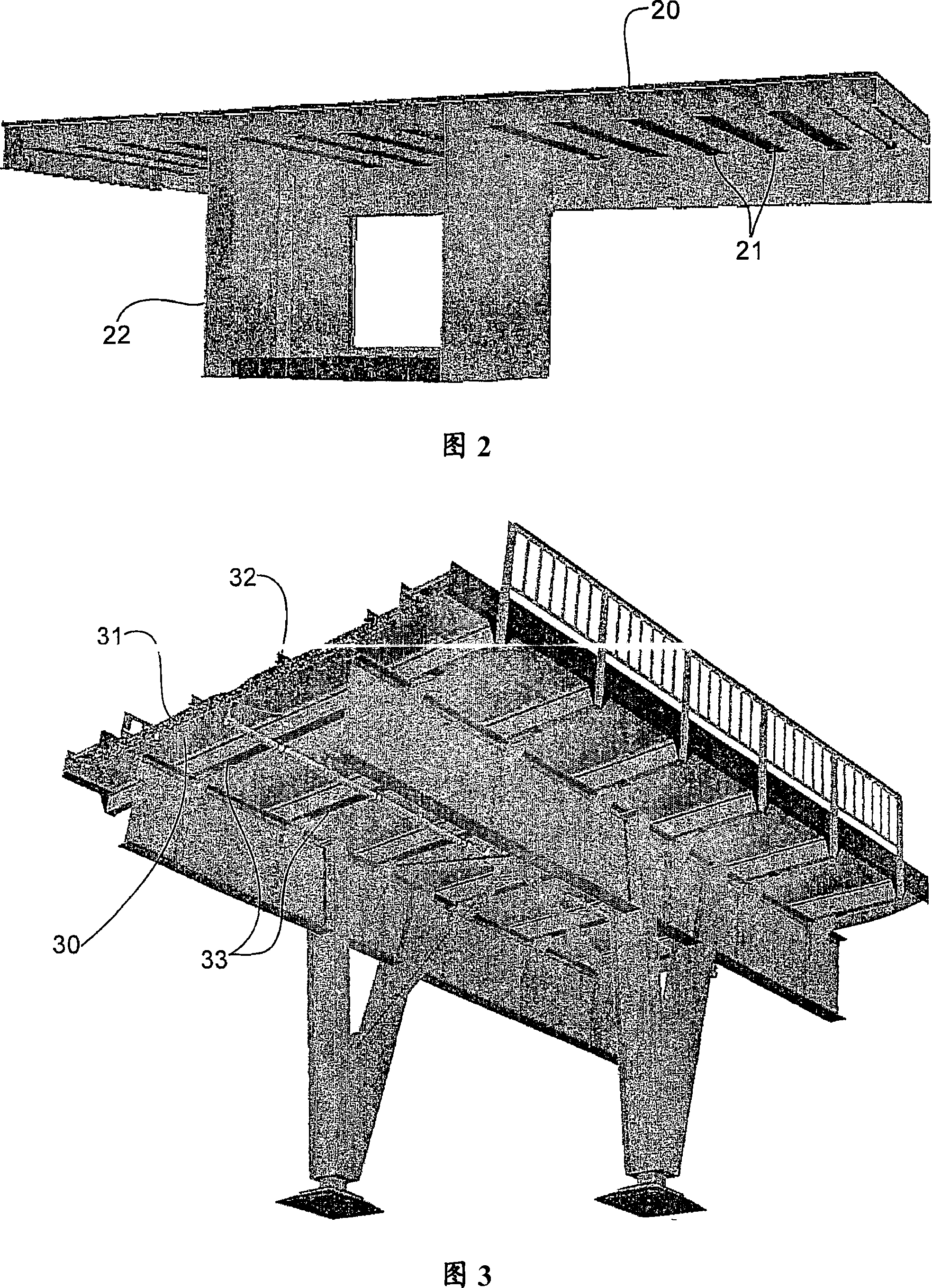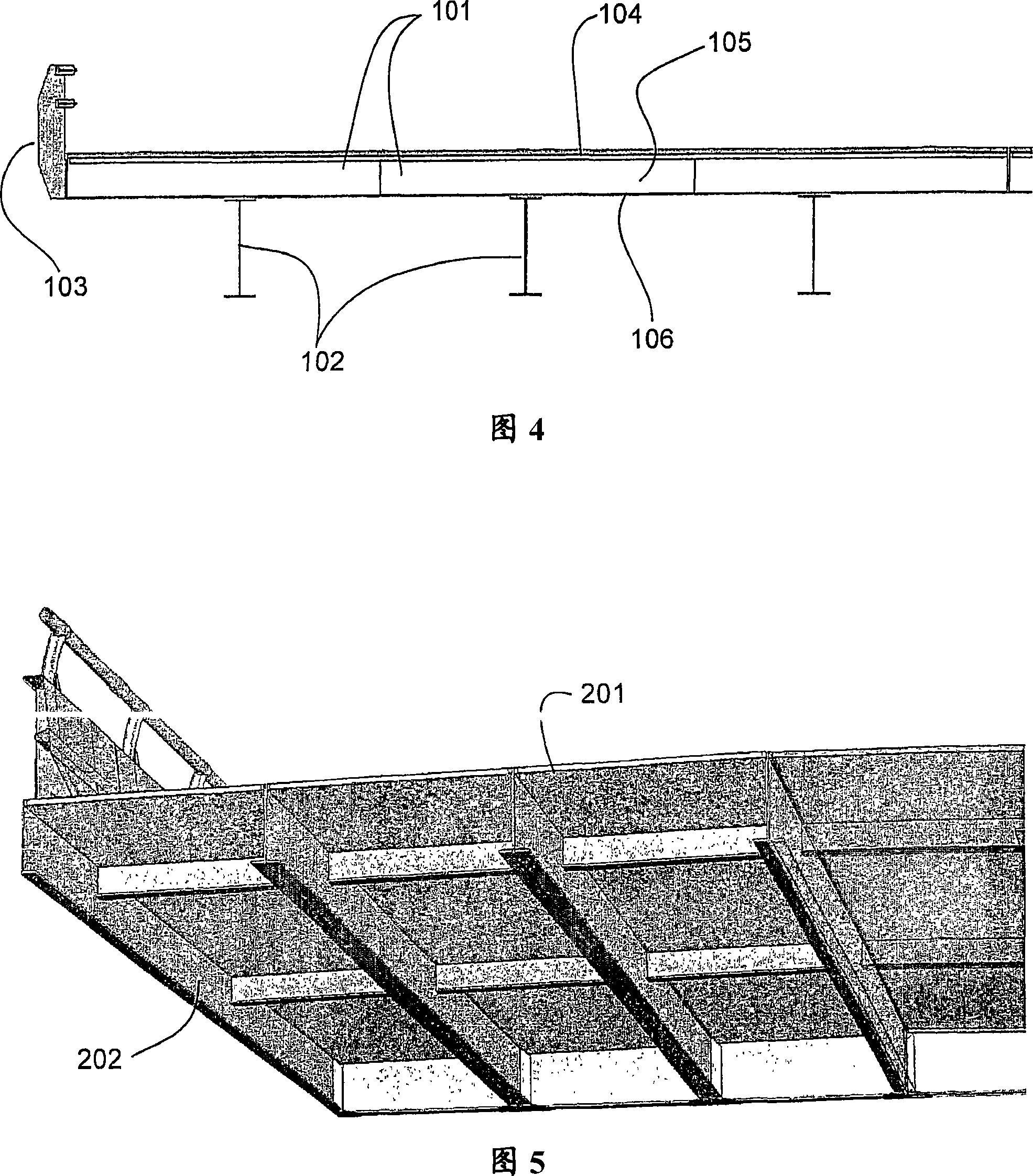Method of reinforcing a bridge
A technology for bridges and reinforcement plates, which is applied in bridges, bridge maintenance, bridge reinforcement, etc., can solve problems such as increasing costs, and achieve the effect of increasing load capacity and minimizing damage
- Summary
- Abstract
- Description
- Claims
- Application Information
AI Technical Summary
Problems solved by technology
Method used
Image
Examples
Embodiment Construction
[0035]According to a first embodiment of the present invention, an existing concrete deck composite steel girder bridge is repaired by replacing the concrete deck with a prefabricated SPS deck panel 101 as shown in FIG. 4 . Subsequently, the SPS deck panels are composited with the existing steel girders 102 by bolting or welding between the panels 101 . Replacement SPS panels 101 are continuously formed by welding them together at adjoining edges. Existing or new steel parapets 103 can be bolted to the SPS deck deck.
[0036] Each SPS panel 101 includes outer metal panels 104, 106 bonded together by an intermediate or core layer 105 of plastic or polymeric material. The outer metal panel may be a steel plate with a thickness in the range of 2-20 mm according to specific application requirements. For plastic or polymeric materials, it is preferred to use compressed (ie non-foamed) thermosetting materials such as polyurethane elastomers. The core layer 105 may have a thicknes...
PUM
| Property | Measurement | Unit |
|---|---|---|
| Thickness | aaaaa | aaaaa |
Abstract
Description
Claims
Application Information
 Login to View More
Login to View More - R&D
- Intellectual Property
- Life Sciences
- Materials
- Tech Scout
- Unparalleled Data Quality
- Higher Quality Content
- 60% Fewer Hallucinations
Browse by: Latest US Patents, China's latest patents, Technical Efficacy Thesaurus, Application Domain, Technology Topic, Popular Technical Reports.
© 2025 PatSnap. All rights reserved.Legal|Privacy policy|Modern Slavery Act Transparency Statement|Sitemap|About US| Contact US: help@patsnap.com



